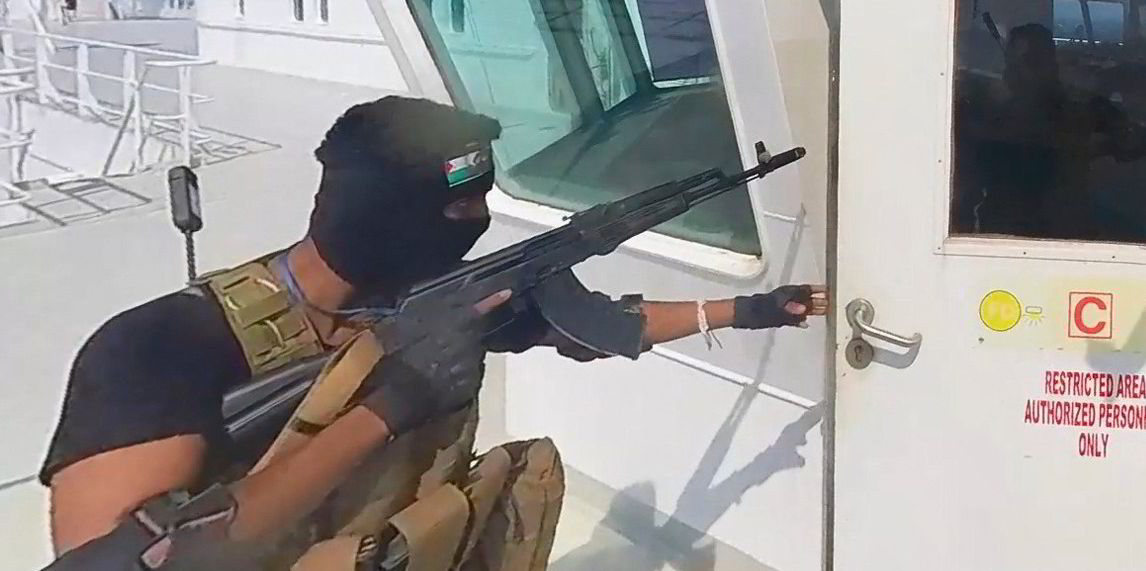Tanker traffic through the Red Sea is holding up, with freight rates surging on some routes, despite fears of further attacks on shipping by Iran-backed Houthi rebels.
The number of tankers passing through the Suez Canal remains similar to levels before attacks on ships in the region increased sharply in December, according to Clarksons Research.
A few operators, including BP and Equinor, have rerouted tankers away from the region, while some owners are refusing to send their vessels on the “red hot” routes in the Red Sea, according to shipbroker Braemar.
But it said traders are keen to avoid rerouting via the Cape of Good Hope because the extra costs would amount to about $1.1m for an LR tanker.
Tankers heading south towards the Bab-al-Mandeb strait on Thursday included the 159,999-dwt crude tanker Omega (built 2000), owned by a Seychelles-based single ship company, according to Kpler tracking data.
The Omega hauled sanctioned Iranian crude last year, according to United Against Nuclear Iran and cargo tracking data, but was still listed, via AIS signals, as having armed guards on board as it sailed south through the Red Sea.
The Sovcomflot-controlled 47,200-dwt product tanker SCF Yenisei (built 2007) was also nearing the strait with a Russian-sourced cargo and is due to arrive in the United Arab Emirates next week, according to Kpler.
The tensions have meant rates for product tankers from the Mediterranean to the Far East spiked in December and continue to climb.
Time charter equivalent rates on the TC15 route have increased from $5,142 per day in 4 October to $25,996 per day on Wednesday.
Baltic data also showed TCE rates on the TC20 route from the Middle East to UK Continent nearly trebled in the past month from $20,998 per day to $57,742 per day.
“Some owners wouldn’t fix cargoes that transit the Red Sea last week, but most will deal with Red Sea transit fixtures on a case-by-case basis,” said Braemar in an update on tanker trades. “But any route involving the Red Sea is red hot.”
Container ship transits through the Red Sea are down by the largest amount (72%) of any shipping sector, while LPG carriers were down 60% and car carriers down 49% over five days from 28 December, according to Clarksons Research. “Bulker and tanker transits have remained overall at similar to pre-December levels,” it said.

The Red Sea is not a major route for VLCCs and the tensions have not had a big impact on the largest crude carriers.
Braemar said there has been no broader impact on suezmax rates, while a decline in aframax traffic moving Russian cargoes to India is partly as a result of tightened sanctions.
At least 22 ships have been attacked since 19 November as the Houthis put pressure on Israel and its allies to end the war against Hamas in Gaza.
The Houthis claim they attack only ships owned by Israel or serving that country’s trade.
But new International Maritime Organization secretary general Arsenio Dominguez told the United Nations Security Council late on Wednesday that the pattern “doesn’t seem to be the case at the moment”.
He said 18 companies have so far decided to reroute their vessels around southern Africa.
Read more
- Maersk once again halts Red Sea transits ‘until further notice’ after Houthi attack
- Red Sea crisis pushes container shipping spot rates to highest level in over a year
- Red Sea danger fails to spook MOL amid car-carrier crunch
- Maersk said to be suspending Red Sea transits again after new Houthi strike
- US forces kill Houthi fighters attacking Maersk container ship in Red Sea





